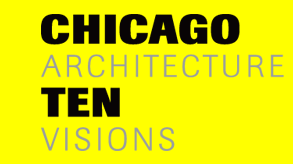 |
 |
|
|
|
JEANNE GANG
Jeanne Gang is a principal of Studio Gang, the successor firm to Studio Gang/O’Donnell formed in 1997. Prior to this she worked in Chicago with Booth Hansen Architects and in Rotterdam with the Office for Metropolitan Architecture (OMA/Rem Koolhaas). The work of Studio Gang has been featured recently in Architectural Record as one of nine emerging design firms to watch. Gang served as lead design principal on the Starlight Theatre at Rock Valley College in Rockford, Illinois, a community center in Chicago’s Chinatown, and a special installation design for an exhibition on aerospace design at the Art Institute of Chicago. She has also served as the president of the Chicago Architectural Club and is an adjunct associate professor at the Illinois Institute of Technology College of Architecture. Gang holds degrees from Harvard University and the University of Illinois.
|
Baseball in the City: Change and Destiny
This installation is based on the results of studying the urban environments around Wrigley Field, where the Chicago Cubs play, and U.S. Cellular Field, home of the Chicago White Sox. Discoveries about these two urban environments are illustrated through drawings, photographs, statistics, and graphic diagrams. The assembled images and information are printed on 15,000 baseball cards arranged to create a wall of cards. Visitors can read the individual baseball cards up close, while at a distance the cards resolve into a large image.
Architect’s statement (excerpt)
“Baseball in the City” is the result of studying, on an urban scale, how environments surrounding baseball parks might adapt and change to accommodate other events. With the help of architecture students at the Illinois Institute of Technology, we conducted research for three years on the physical differences between Chicago’s two baseball parks and their connected neighborhoods. While Wrigleyville, home of the Chicago Cubs, has the ability to adapt and maintain high, diverse density—game or no game—the section of the city surrounding U.S. Cellular Field, home of the Chicago White Sox, is monofunctional with only two conditions: empty or full. Our exhibit includes four proposals for reintegrating U.S. Cellular Field into the life of the city in the form of architectural scale models.
|
|
 |
|
|
